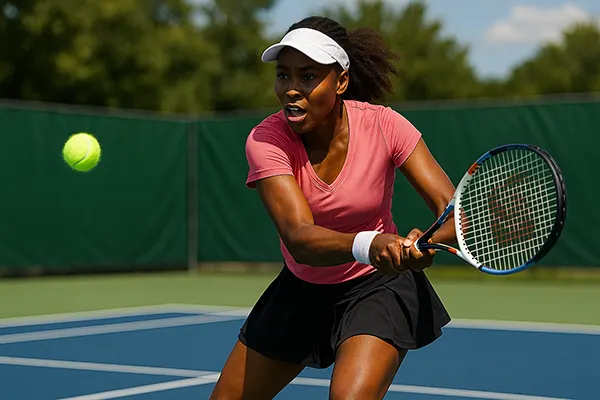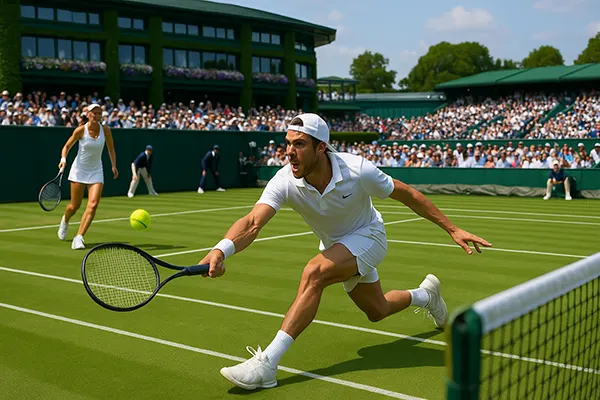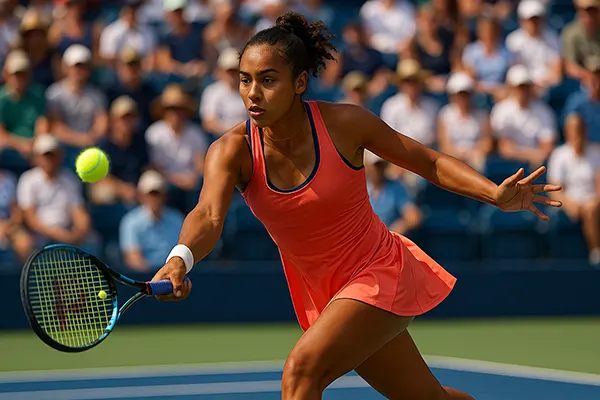Women’s tennis has entered a new era defined by youth, innovation, and global diversity. In 2025, the landscape of the sport looks different from even five years ago — the power dynamics have shifted, and a new group of athletes is rewriting the narrative of what it means to be a champion. These women are not just inheriting the sport; they are transforming it with modern training, mental strength, and social awareness that inspires fans worldwide.
Rising Stars Redefining the Court
The most striking development in 2025 is the emergence of young champions who combine physical power with tactical intelligence. Players such as Coco Gauff, Mirra Andreeva, and Zheng Qinwen are challenging traditional playing styles, blending baseline aggression with calculated precision. Their approach shows a new balance between athleticism and strategy that keeps both fans and opponents guessing.
Technology and data analytics have also reshaped player preparation. Many of today’s rising stars train with AI-assisted systems that analyse movement efficiency and fatigue. As a result, these athletes are reaching their physical peak earlier while reducing the risk of injury. The game has become faster, smarter, and more unpredictable — and the new generation is thriving in that environment.
Beyond their technical evolution, these players bring cultural variety that broadens tennis’s appeal. With champions emerging from North America, Asia, and Eastern Europe, the WTA Tour now feels more global than ever. This diversity not only enhances the competition but also attracts new audiences who see themselves represented on the world stage.
The Balance Between Power and Precision
Modern tennis is no longer about brute strength alone. The 2025 season demonstrates how top women players mix power with precision, turning rallies into strategic battles rather than pure physical contests. The average match length has increased slightly, but the intensity of play and number of decisive points per set are higher than in previous years.
Players like Iga Świątek and Aryna Sabalenka have shown that success now depends on adaptability. Their ability to change tactics mid-match — switching between offensive dominance and defensive resilience — is setting new benchmarks for others. This flexibility has redefined what it means to be an all-court player in modern tennis.
Coaches have also become more analytical, focusing on mental strength and situational awareness. Many work alongside sports psychologists and performance scientists to ensure their athletes can manage the mental demands of global competition. The result is a generation of players who understand that emotional control is just as vital as technical skill.
Evolution of Playing Styles and Strategy
The tactical depth in women’s tennis today is unprecedented. The new generation of players analyses opponents with precision, often using digital platforms to study every serve pattern and rally sequence. Unlike previous decades, where physical endurance dominated, strategy and anticipation now determine who wins crucial points.
Hybrid players — those who can dominate both from the baseline and at the net — are leading the charge. Emma Raducanu, when healthy, continues to inspire a balanced approach that merges classic techniques with modern aggression. Meanwhile, Andreeva’s court vision and variety show that creative, unpredictable tennis still has a place at the top level.
These tactical shifts also reflect changes in equipment and court surfaces. Advances in racket technology and string tension have enabled players to generate more spin and control, which encourages longer, more dynamic rallies. The sport is more technical than ever, demanding constant innovation from both athletes and coaches.
The Psychological Edge
In 2025, mental strength has become the defining trait of champions. As the physical gap between players narrows, it’s the ability to stay composed under pressure that separates the best from the rest. The use of mindfulness training, visualisation techniques, and emotional resilience exercises has become standard practice among top-ranked women.
Data from the WTA shows that players who actively engage in psychological coaching report higher consistency and lower burnout rates. The emphasis on mental health is reshaping how success is measured — it’s no longer just about titles but about longevity and balance. This marks a positive shift towards sustainable careers and healthier athletes.
Fans, too, have responded positively to this openness about mental challenges. Players like Naomi Osaka and Bianca Andreescu have played a vital role in changing perceptions, showing that vulnerability and strength can coexist. Their stories have encouraged young athletes to seek help when needed and to view mental preparation as an integral part of performance.

Global Impact and the Future of Women’s Tennis
Women’s tennis in 2025 is more global, inclusive, and accessible than ever before. The WTA’s efforts to expand tournaments in regions like Africa and South America have created new opportunities for emerging talent. Junior academies and scholarship programmes are empowering girls from underrepresented areas to pursue professional careers in the sport.
The financial structure of women’s tennis has also improved significantly. Equal prize money at major tournaments has become standard, and sponsorships are increasingly based on performance and personality rather than marketability alone. This has encouraged more female athletes to view tennis as a viable long-term profession, not just a short-lived opportunity.
Looking ahead, the future of women’s tennis lies in collaboration between players, governing bodies, and fans. Sustainability, technology, and equality will continue to shape the sport’s direction. If 2025 is any indication, this generation of champions is not only redefining how tennis is played — they are transforming what it represents for millions worldwide.
Inspiring the Next Generation
The influence of today’s champions goes beyond the court. Many are using their platforms to advocate for environmental causes, gender equality, and youth education. Their leadership has made women’s tennis a powerful example of how sport can drive social progress while maintaining competitive excellence.
Grassroots programmes inspired by stars like Ons Jabeur and Coco Gauff are already seeing results, with record participation rates among girls aged 8–14 in several countries. These initiatives show that the next wave of players will not only inherit an advanced sport but also a stronger community of role models.
Ultimately, the legacy of this era will be defined by its balance of progress and purpose. Women’s tennis in 2025 isn’t just about winning matches — it’s about shaping a more equitable and inspiring future for athletes and fans alike.




